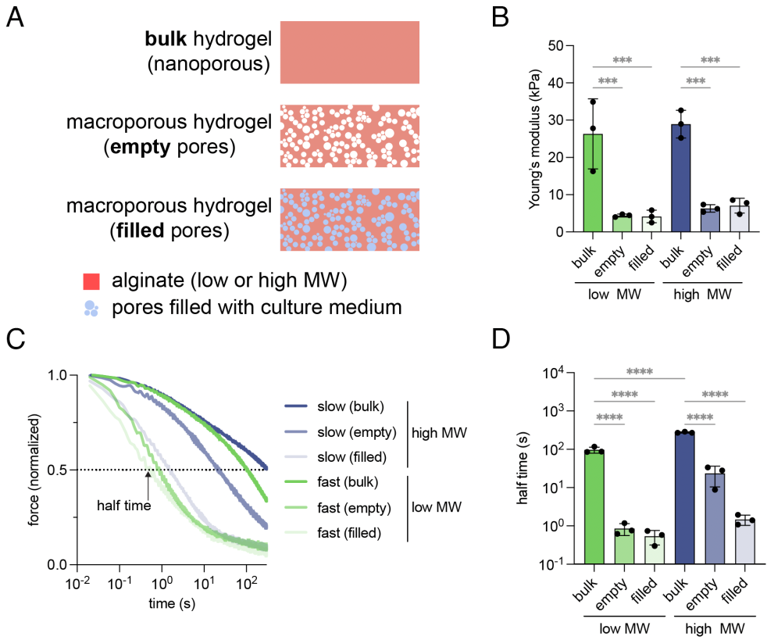Macroporous Alginate Hydrogels with Tunable Mechanics

Hydrogels are widely used in cell culture and tissue engineering. A team led by Mooney, in collaboration with Mahadevan and Weitz, have developed a rapid method for creating microporous alginate hydrogels that exhibit significantly lower Young's modulus values and relaxation half times compared to bulk hydrogels. Importantly, these properties are maintained when the macroporous hydrogels are immersed in cell culture medium for 7 days. Such observations reveal the connection between the bulk architecture and time-dependent mechanical properties of macroporous alginate hydrogels and inform design principles for engineering porous scaffolds for in vitro culture models and materials-based cell therapies.
Publication:
Nerger, B.A., K. Kashyap*, B.T. Deveney, J. Lou, B.F. Hanan, Q. Liu, A. Khalil, T. Lungjangwa, M. Cheriyan, A. Gupta*, R. Jaenisch, D.A. Weitz, L. Mahadevan, and D.J. Mooney, "Tuning porosity of macroporous hydrogels enables rapid rates of stress relaxation and promotes cell expansion and migration," PNAS 121 (45), e2410806121 (2024) ![]()
![]()
David J. Mooney (Bioengineering), Lakshminarayanan Mahadevan (OEB, Physics, SEAS), and David A. Weitz (Physics & Applied Physics)
2024-2025 Harvard MRSEC (DMR-2011754)
